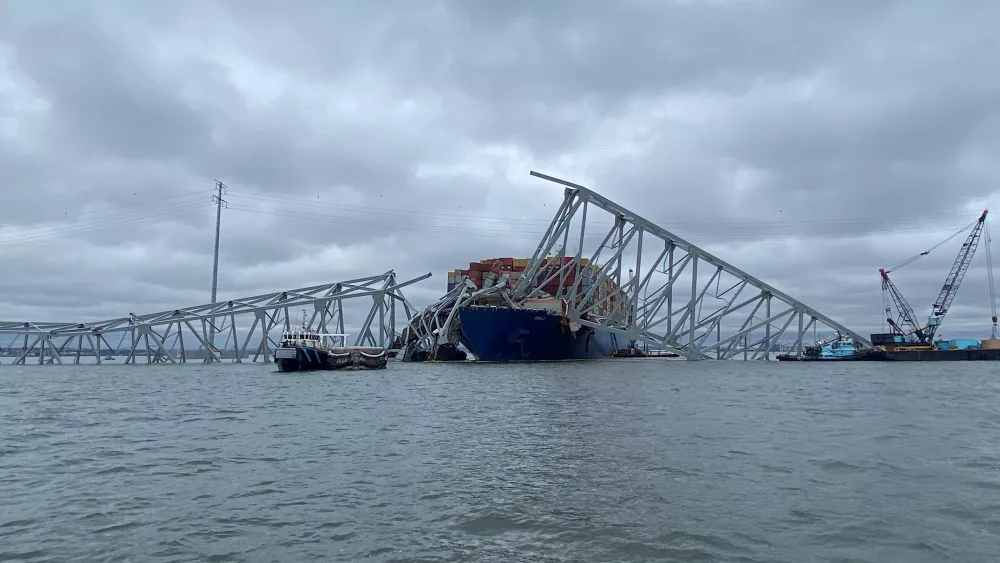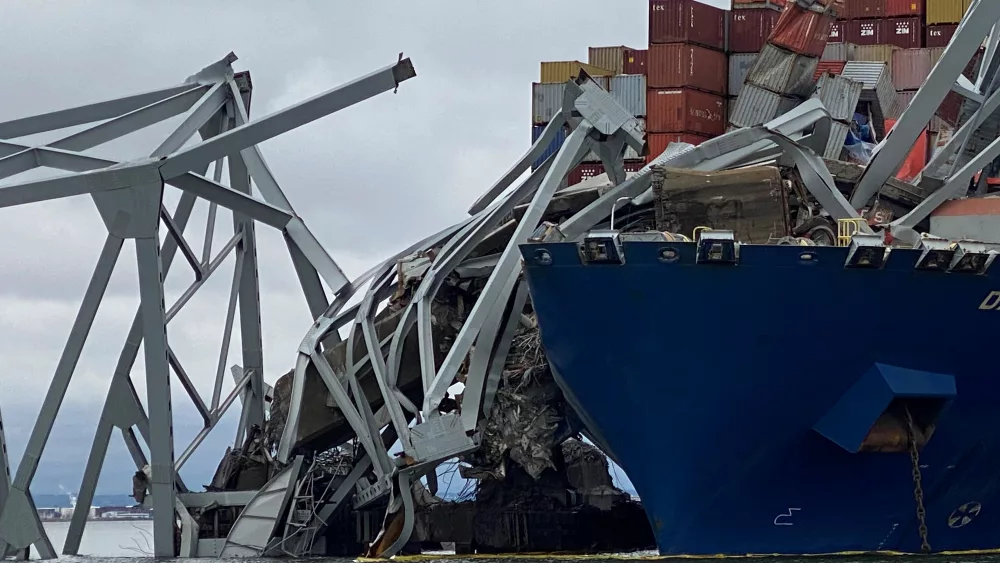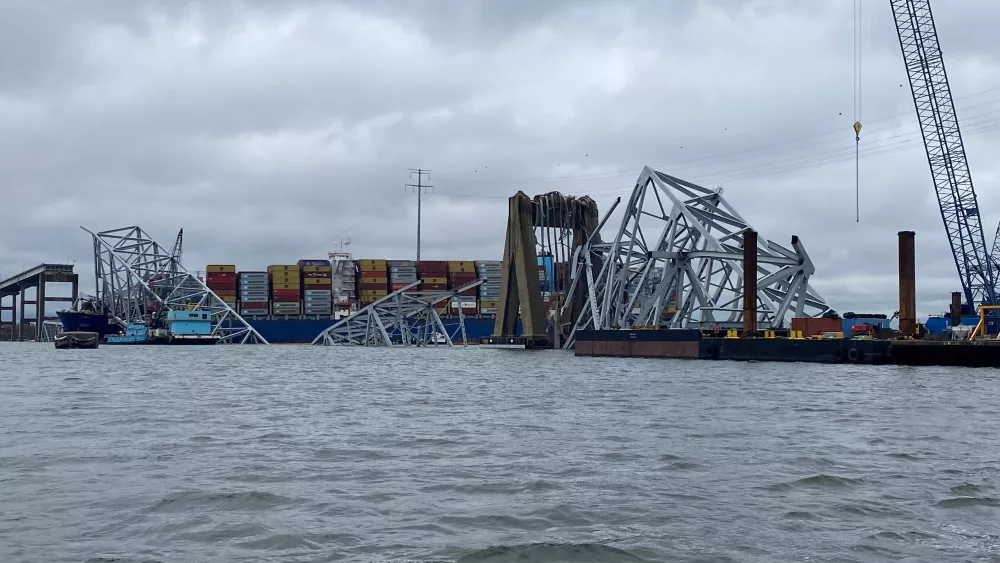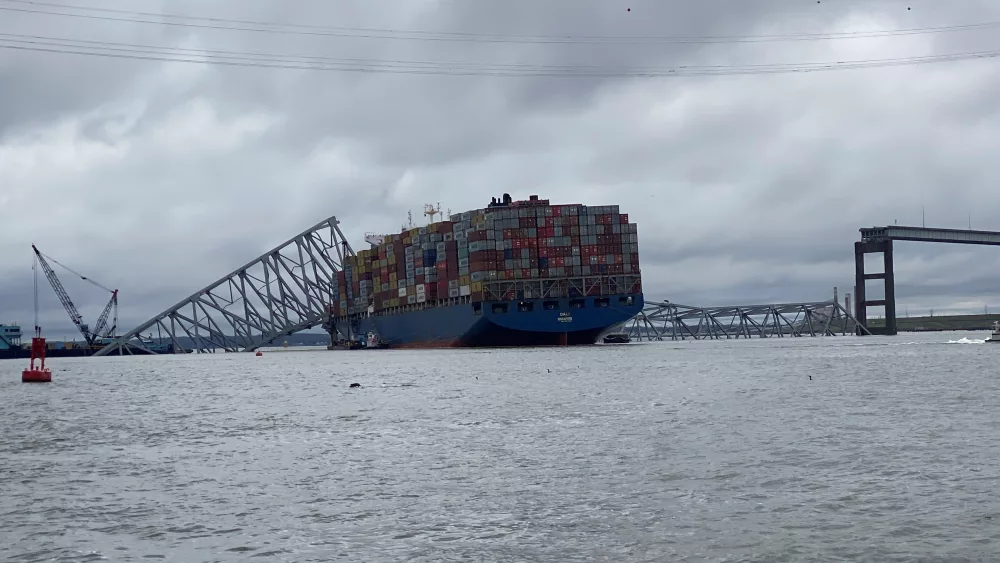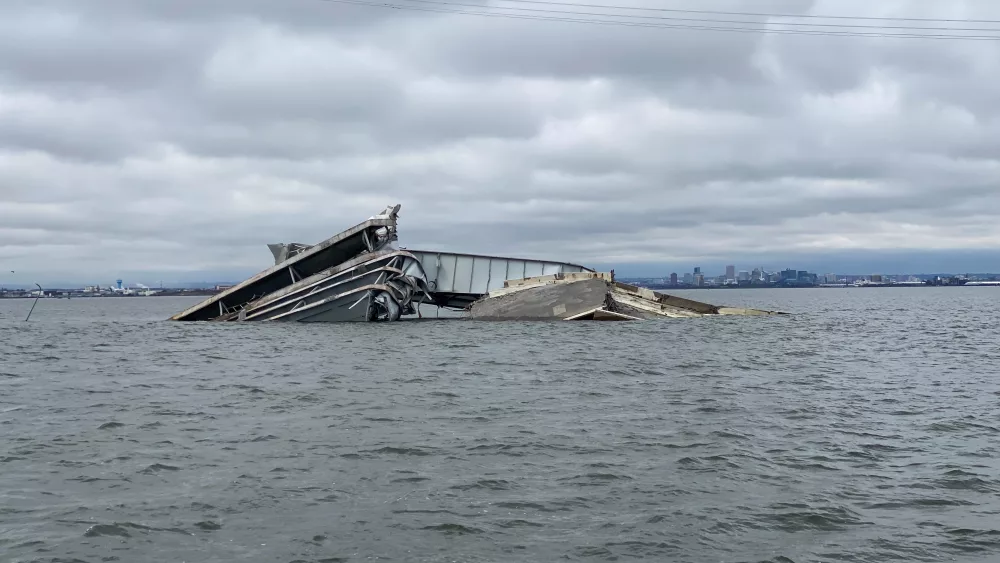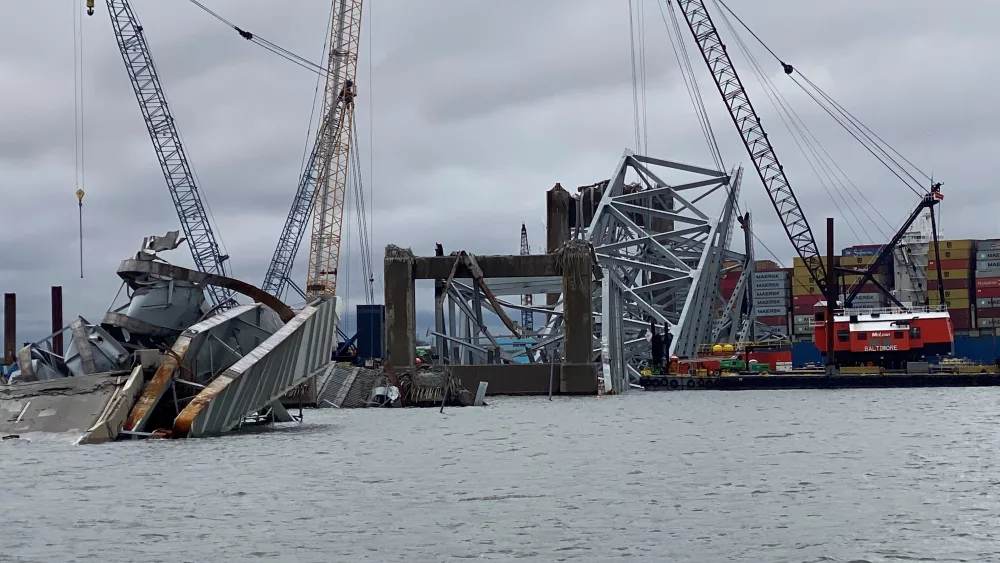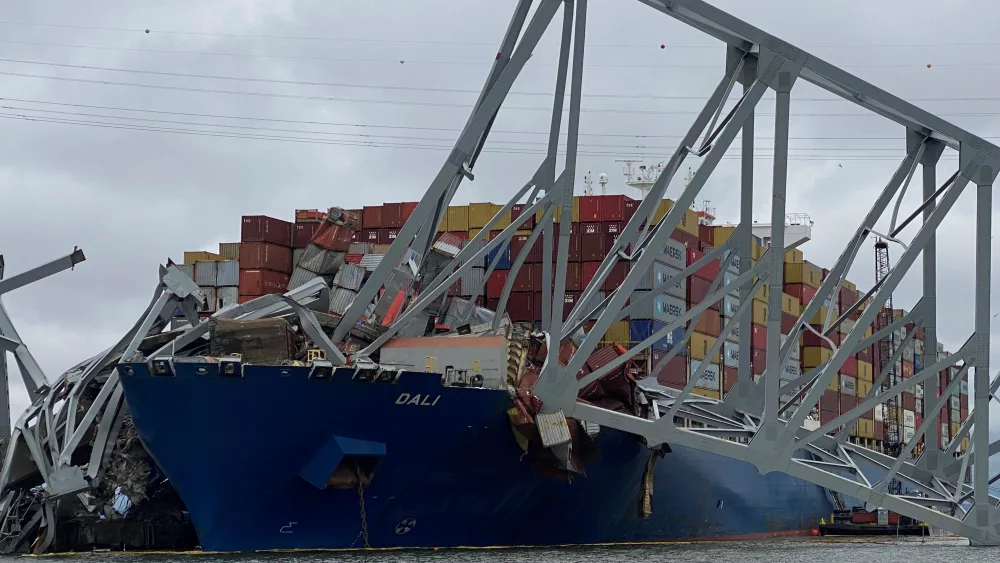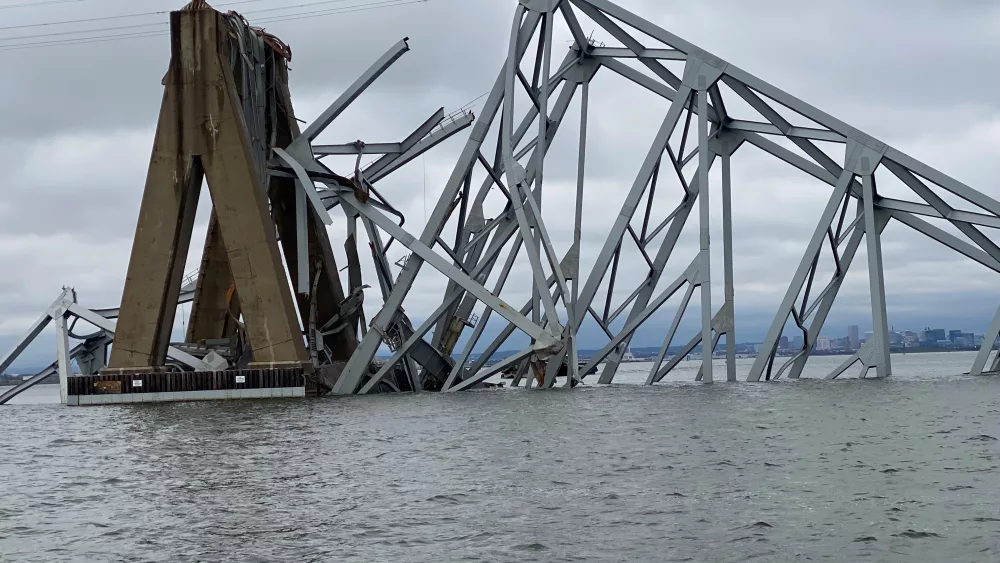Gov. Wes Moore said the salvage effort will include using technology to map the site of Baltimore's collapsed Francis Scott Key Bridge.
The governor said Wednesday's unified command briefing indicated Wednesday's weather conditions made it unsafe for rescue divers to return to the ocean. The governor said sonar is being used because the water is so murky that salvage divers can't see more than two feet in front of them.
Col. Estee Pinchacin of the U.S. Army Corps of Engineers said Tuesday that underwater conditions were “extremely unforgiving” for divers.
“The scale of this is unfathomable,” she says.
I clock: U.S. Army Corps of Engineers Col. Estee Pinchasin speaks with WBAL's TJ Smith
Officials said the cargo ship had 3,000 to 4,000 tons of steel on top, and crews were working to remove undamaged containers from the ship so work could continue in the rain. That's what it means.
The U.S. Navy's Naval Sea Systems Command Salvage and Diving Supervisor released new 3D underwater images of the scene on Tuesday. These are indicative of the scale of the upcoming salvage operations. These images are very important to divers because the Patapsco River has 4 to 5 feet of loose mud, which limits visibility underwater. As there is no underwater video available of the wreckage, divers are guided by detailed verbal instructions.
Two channels have since been launched, showing underwater images showing the scale and challenges that await salvage crews.
Officials announced at a press conference Tuesday afternoon that work is underway to open a third channel that would allow larger ships to pass through the bottleneck. The channel is primarily open to vessels assisting with cleanup efforts, along with some barges and tugboats stuck in the Port of Baltimore.
Crews are working on a complex task to remove steel and concrete at the site where a container ship lost power and hit a support, causing the bridge to collapse fatally. On Sunday, a diving team inspected part of the bridge to inspect the ship, and lift workers used torches to cut through the above-water section of the twisted steel superstructure.
The Maryland Department of the Environment is testing water quality upstream and downstream of the Key Bridge collapse site, but so far no contaminants have been found.
I clock: Officials explain bridge collapse removal process
Authorities believe six workers jumped to their deaths in the collapse, including two whose bodies were found last week. Two other workers survived.
Moore said at a news conference Monday afternoon that the first priority was to recover the remaining four bodies, after which the transport route would be reopened. He said he understood the urgency but said the risks were high. Crews described the collapsed bridge's dismembered steel girders as “chaotic wreckage”.
“What we found is that it's more complex than we originally expected,” said U.S. Coast Guard Maj. Gen. Shannon Gilreath.
Meanwhile, the ship remains stationary and 21 crew members remain on board for now, officials said.
President Joe Biden is expected to visit the site of the collapse on Friday and meet with state and local officials to discuss the federal government's response.
The governor said 33 people were responded to from business recovery centers in Baltimore City and Baltimore County on Tuesday alone, and the lieutenant governor has convened a new internal economic response team.
I clock: 19th century law may limit compensation for bridge collapse
On March 26, the cargo ship Dali was en route from Baltimore to Sri Lanka when the power went out and the bridge collapsed. The ship issued a Mayday alert, giving police enough time to stop traffic, but not enough to save road construction workers filling the hole in the bridge.
Dali is managed by Singapore's Synergy Marine Group and owned by Grace Ocean Private Ltd. Danish shipping giant Maersk chartered the Dali.
Synergy and Grace Ocean filed a motion in court Monday seeking to limit liability, a routine but important step in cases filed under U.S. maritime law. A federal court in Maryland will ultimately decide who is responsible and how much is owed.
The filing caps the company's liability at approximately $43.6 million. The ship itself was estimated to be worth up to $90 million and owed more than $1.1 million in cargo revenue. This estimate also subtracts her two major expenses: at least $28 million in repairs and at least $19.5 million in salvage costs.
Officials are trying to decide how to rebuild this major bridge, which was completed in 1977. The bridge carried Interstate 695 around southeastern Baltimore and became a symbol of the city's working-class roots and maritime culture.
Congress is expected to consider measures to help people who have lost jobs or businesses due to the long-term closure of the Port of Baltimore. The port handles more automobiles and farm equipment than any other facility in the United States.



